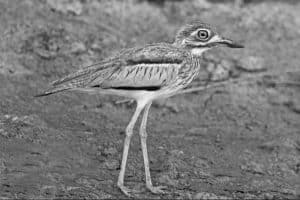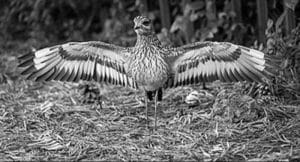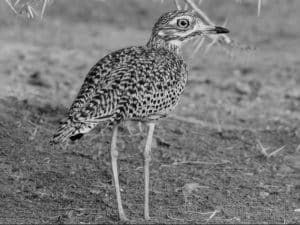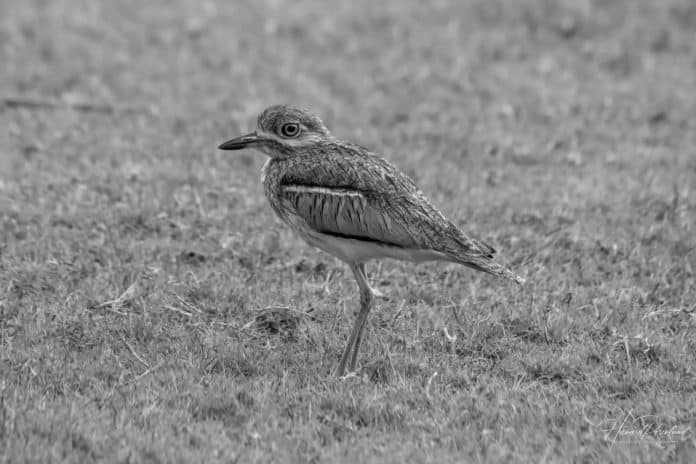Introduction to Thick-Knees in Tanzania
Welcome to Tanzania, a country known for its diverse wildlife and stunning landscapes. Among the many fascinating creatures that call this place home, one stands out for its unique appearance and behavior – the Thick-Knees. Found in the eastern part of Africa, including Tanzania, these birds are a sight to behold. In this article, we will explore the habitat, physical characteristics, behavior, and conservation status of Thick-Knees in Tanzania. So, let’s dive in and discover the wonders of these waterfront dwellers.
Habitat and Distribution of Thick-Knees

Thick-Knees, scientifically known as Burhinus, are commonly found in various habitats throughout Tanzania. They have a wide distribution range, spanning from the coastal areas to the inland plains. These adaptable birds can be seen in grasslands, savannahs, wetlands, and even near human settlements. They are particularly fond of waterfronts, such as lakeshores, riverbanks, and estuaries, where they can find an abundant supply of food.
Physical Characteristics of Thick-Knees
Thick-Knees are medium-sized birds with distinctive physical features. They have a robust build, measuring about 40 to 50 centimeters in length. Their most prominent characteristic is their large eyes, which are perfectly adapted for their nocturnal lifestyle. These birds have long, sturdy legs and large feet, enabling them to walk and run with ease on various terrains. Their plumage is predominantly grayish-brown, providing effective camouflage against their surroundings.
Behavior and Diet of Thick-Knees
Thick-Knees are primarily crepuscular and nocturnal birds, meaning they are most active during dawn, dusk, and night time. During the day, they can often be found resting in shaded areas, such as under trees or bushes. These birds are opportunistic feeders, with a diet consisting of insects, small reptiles, crustaceans, and even small mammals. They use their long beak to probe the ground and catch their prey. Thick-Knees are also known for their unique feeding technique – they lift their foot and strike the ground to disturb hidden insects, making them easier to catch.
Breeding and Reproduction of Thick-Knees

Thick-Knees form monogamous pairs during the breeding season, which typically occurs between September and December in Tanzania. They choose a nesting site on the ground, often in a shallow depression hidden among vegetation. The female lays 2 to 3 eggs, which both parents take turns incubating. The incubation period lasts for about 25 to 30 days. Once the chicks hatch, they are precocial, meaning they are able to leave the nest and walk shortly after hatching. The parents provide care and protection to the chicks until they are independent.
Conservation Status of Thick-Knees in Tanzania
The conservation status of Thick-Knees in Tanzania is currently categorized as “Least Concern” by the International Union for Conservation of Nature (IUCN). This classification indicates that the species is not facing any immediate threats or significant population declines. However, it is important to note that habitat loss and degradation, as well as disturbances from human activities, can have a negative impact on their population. Conservation efforts should focus on protecting their habitats and promoting awareness among local communities and tourists about the importance of preserving these magnificent birds.
Best Places to Spot Thick-Knees in Tanzania
If you’re planning a trip to Tanzania and want to catch a glimpse of Thick-Knees in their natural habitat, there are several excellent locations to consider. Lake Manyara National Park is known for its diverse birdlife, and Thick-Knees can often be spotted along the lakeshore. The Serengeti National Park, famous for its annual wildebeest migration, is also home to these fascinating birds. Additionally, the Selous Game Reserve and Tarangire National Park offer excellent opportunities for birdwatching, including sightings of Thick-Knees.
Tips for Observing Thick-Knees in the Wild

To enhance your chances of observing Thick-Knees in the wild, it’s essential to keep a few tips in mind. Firstly, be patient and observant, as these birds can be elusive and blend in well with their surroundings. Early morning and late afternoon are the best times to spot them when they are most active. Additionally, bring a pair of binoculars or a camera with a telephoto lens to get a closer look without disturbing their natural behavior. Lastly, respect their space and avoid getting too close, as this can cause unnecessary stress and disturbance.
Fun Facts about Thick-Knees
Here are some intriguing facts about Thick-Knees:
- Thick-Knees are also known as Stone-Curlews due to their resemblance to true curlews, although they are not directly related.
- These birds have a unique call, which is often described as a loud, haunting wailing sound.
- Thick-Knees have an impressive wingspan of around 75 to 90 centimeters, allowing them to soar gracefully through the sky.
- They have a remarkable ability to camouflage themselves by lying flat on the ground, relying on their cryptic plumage to blend in perfectly with their surroundings.
Conclusion
Thick-Knees in Tanzania are indeed waterfront wonders. Their adaptability, physical characteristics, and unique behaviors make them a fascinating species to observe in the wild. As visitors to their habitat, it is our responsibility to ensure their conservation and protection. By appreciating their beauty and spreading awareness about their importance, we can contribute to the continued existence of these remarkable birds for generations to come. So, next time you find yourself in Tanzania, be sure to keep an eye out for the marvelous Thick-Knees and appreciate their presence in this remarkable country.

































